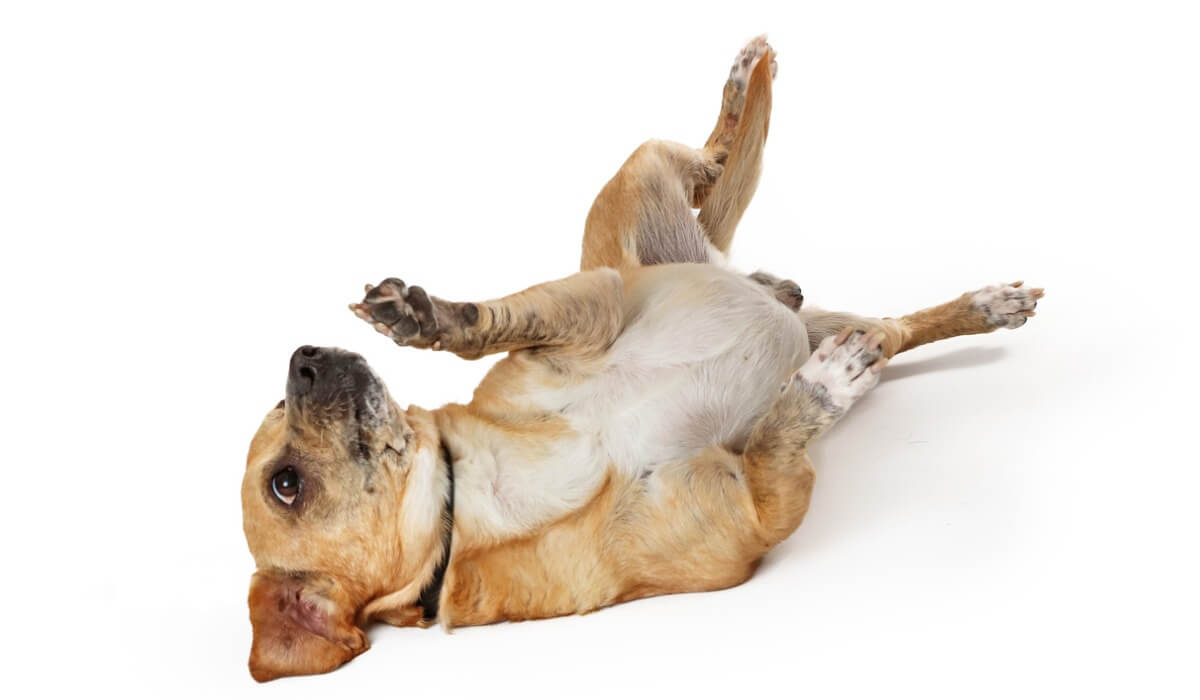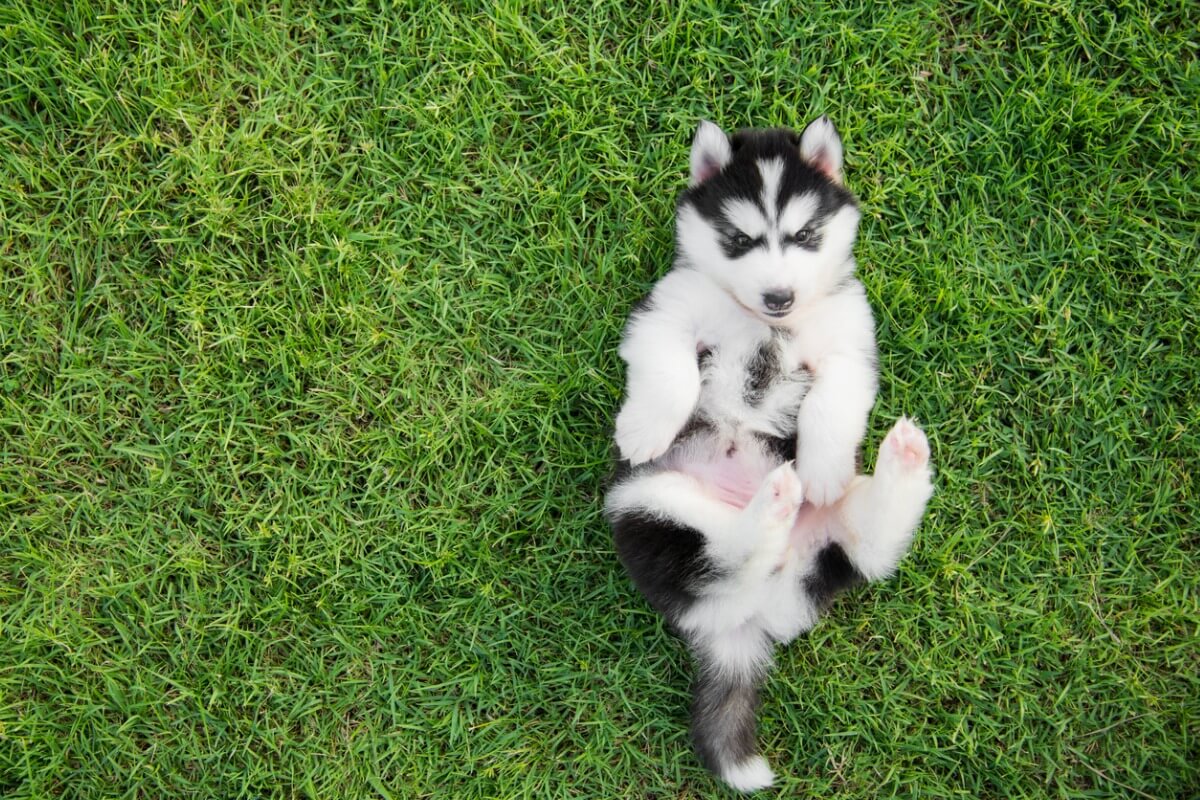Do Dogs Have Belly Buttons?


Reviewed and approved by the biologist Samuel Sanchez
Many of us will have often wondered if dogs have belly buttons, especially after petting our own dog’s belly and not having noticed one. Your initial response may be: “they must have one, even if I can’t see it”, but is it true? In this article, we’re going to tell you all about it.
The navel is a “mark” that reminds us of the union between mother and child. It’s like a scar that remains in the place where the umbilical cord once was, through which many species of animals obtain food while they’re in the gestation stage. Would you like to know more about it? Be sure to read on.
Do all animals have belly buttons?
As scientific articles indicate, the umbilical cord is a very important living tissue in the development of fetuses. It has been shown to be involved in vital processes related to the immune system, nutritional balance, and the biochemical balance of the unborn child.
It has even been proven that an inadequate circulation inside the cord can cause neurological disorders and neonatal adaptation problems, as well as fetal death.
In the case of human beings, and when the moment of birth arrives, the umbilical tissue is cut at birth and maternal nutrition is initiated by means of breastfeeding. However, a sort of “stump” remains, which, over the days closes, dries up and falls off, giving way to what we know as the navel, or belly button. This mark is distinctive of the following animals:
- Mammals: These are vertebrate animals (with bone structure and vertebrae) and hair all over their bodies. They breathe through their lungs and have very diverse characteristics. With the exception of those belonging to the order of monotremes (the platypus and echidnas), all mammals are viviparous.
- Other viviparous animals: All animals (mammals or not) that develop and are nourished inside the mother’s womb, where they receive nutrients, oxygen, and protection. Although many viviparous animals have a navel, some don’t, as they don’t develop in a placenta.
- Strictly placental viviparous: These are mammals that feed on their mother’s milk and in their embryonic stage develop inside a placenta, which is located in the mother’s uterus for a long period. Marsupials, for example, aren’t included in this category.

Do dogs have belly buttons?
After explaining what the umbilical cord is and the animals that have one, do you think that dogs have belly buttons? Here’s the answer.
If your answer to the question is a resounding yes, you’re right. Dogs do have belly buttons because they’re placental viviparous mammals. In other words, during their embryonic growth, they’re protected by a placenta connected to the mother through the umbilical cord.
In the case of canids and other wild animals, it’s the mother who cuts the cord after birth. It’s common for her to eat this tissue, along with the placenta, to recover nutrients, and this allows her to bring up her litter more easily. Like humans, dogs are left with a stump that will close up and dry out over the course of a few days.
Sometimes the mother cuts their pup’s cord very close to the belly and causes an open wound. In these cases, the owner should consult a veterinarian to establish the severity of the situation. Sometimes it’s necessary to close the opening surgically to avoid future problems.
So, why is the navel hardly visible in dogs? The healing process of dogs is different from that of humans, as both the puppies and the mother lick the area and the skin begins to heal without leaving almost no trace. In addition, being hairy all over, it’s not unusual that their belly button is completely hidden.
Where’s a dog’s navel?
If your curiosity has been piqued, then read on! First of all, locate an imaginary point in the middle of the dog’s abdomen, which should be below the ribs and a little above the genitals.
There you can see a small circle that may appear as a scar and, in some cases, a slight bulge. Depending on how hairy your dog is in that area, it may or may not be easy to spot.
Diseases related to a dog’s belly button
Among the diseases that affect dogs in relation to their navel is the umbilical hernia. This usually appears in the first few months of life and is identified as a hard lump. Some professionals recommend that you follow up and take a conservative approach, because it may disappear by itself in the next 6 months of life.
However, if the hernia doesn’t disappear, it may be necessary to perform surgery to avoid future problems, although, having said that, it won’t endanger your dog’s life. Even, and by veterinary recommendation, some guardians wait until it’s time to sterilize the animal and remove the hernia in a single joint procedure.
What you do have to be very careful of is the post-surgical recovery, because, in these cases, it’s best to avoid long walks and a lot of effort. You’ll need to offer your dog a low-fat balanced diet, in order to avoid irritations in the wound. In addition, you’ll have to use an Elizabethan collar if the dog tends to lick itself, because it could tear off the stitches.
The cleaning of the wound should be done by the owner at home following the protocol indicated by the veterinarian and no medications or antibiotic products should be administered without authorization. With the necessary care, the dog will soon recover and resume its life normally.

So, you’ve now found out that dogs do have a belly button! Sometimes it’s difficult to see if they’re rather hairy, but, in all cases, it’s an indication that they were once connected to their mother’s womb by the umbilical cord.
Many of us will have often wondered if dogs have belly buttons, especially after petting our own dog’s belly and not having noticed one. Your initial response may be: “they must have one, even if I can’t see it”, but is it true? In this article, we’re going to tell you all about it.
The navel is a “mark” that reminds us of the union between mother and child. It’s like a scar that remains in the place where the umbilical cord once was, through which many species of animals obtain food while they’re in the gestation stage. Would you like to know more about it? Be sure to read on.
Do all animals have belly buttons?
As scientific articles indicate, the umbilical cord is a very important living tissue in the development of fetuses. It has been shown to be involved in vital processes related to the immune system, nutritional balance, and the biochemical balance of the unborn child.
It has even been proven that an inadequate circulation inside the cord can cause neurological disorders and neonatal adaptation problems, as well as fetal death.
In the case of human beings, and when the moment of birth arrives, the umbilical tissue is cut at birth and maternal nutrition is initiated by means of breastfeeding. However, a sort of “stump” remains, which, over the days closes, dries up and falls off, giving way to what we know as the navel, or belly button. This mark is distinctive of the following animals:
- Mammals: These are vertebrate animals (with bone structure and vertebrae) and hair all over their bodies. They breathe through their lungs and have very diverse characteristics. With the exception of those belonging to the order of monotremes (the platypus and echidnas), all mammals are viviparous.
- Other viviparous animals: All animals (mammals or not) that develop and are nourished inside the mother’s womb, where they receive nutrients, oxygen, and protection. Although many viviparous animals have a navel, some don’t, as they don’t develop in a placenta.
- Strictly placental viviparous: These are mammals that feed on their mother’s milk and in their embryonic stage develop inside a placenta, which is located in the mother’s uterus for a long period. Marsupials, for example, aren’t included in this category.

Do dogs have belly buttons?
After explaining what the umbilical cord is and the animals that have one, do you think that dogs have belly buttons? Here’s the answer.
If your answer to the question is a resounding yes, you’re right. Dogs do have belly buttons because they’re placental viviparous mammals. In other words, during their embryonic growth, they’re protected by a placenta connected to the mother through the umbilical cord.
In the case of canids and other wild animals, it’s the mother who cuts the cord after birth. It’s common for her to eat this tissue, along with the placenta, to recover nutrients, and this allows her to bring up her litter more easily. Like humans, dogs are left with a stump that will close up and dry out over the course of a few days.
Sometimes the mother cuts their pup’s cord very close to the belly and causes an open wound. In these cases, the owner should consult a veterinarian to establish the severity of the situation. Sometimes it’s necessary to close the opening surgically to avoid future problems.
So, why is the navel hardly visible in dogs? The healing process of dogs is different from that of humans, as both the puppies and the mother lick the area and the skin begins to heal without leaving almost no trace. In addition, being hairy all over, it’s not unusual that their belly button is completely hidden.
Where’s a dog’s navel?
If your curiosity has been piqued, then read on! First of all, locate an imaginary point in the middle of the dog’s abdomen, which should be below the ribs and a little above the genitals.
There you can see a small circle that may appear as a scar and, in some cases, a slight bulge. Depending on how hairy your dog is in that area, it may or may not be easy to spot.
Diseases related to a dog’s belly button
Among the diseases that affect dogs in relation to their navel is the umbilical hernia. This usually appears in the first few months of life and is identified as a hard lump. Some professionals recommend that you follow up and take a conservative approach, because it may disappear by itself in the next 6 months of life.
However, if the hernia doesn’t disappear, it may be necessary to perform surgery to avoid future problems, although, having said that, it won’t endanger your dog’s life. Even, and by veterinary recommendation, some guardians wait until it’s time to sterilize the animal and remove the hernia in a single joint procedure.
What you do have to be very careful of is the post-surgical recovery, because, in these cases, it’s best to avoid long walks and a lot of effort. You’ll need to offer your dog a low-fat balanced diet, in order to avoid irritations in the wound. In addition, you’ll have to use an Elizabethan collar if the dog tends to lick itself, because it could tear off the stitches.
The cleaning of the wound should be done by the owner at home following the protocol indicated by the veterinarian and no medications or antibiotic products should be administered without authorization. With the necessary care, the dog will soon recover and resume its life normally.

So, you’ve now found out that dogs do have a belly button! Sometimes it’s difficult to see if they’re rather hairy, but, in all cases, it’s an indication that they were once connected to their mother’s womb by the umbilical cord.
All cited sources were thoroughly reviewed by our team to ensure their quality, reliability, currency, and validity. The bibliography of this article was considered reliable and of academic or scientific accuracy.
- Olaya-Contreras M, Bernal JE. Comprendiendo el cordón umbilical. Patologia Rev Latinoam. 2013;51:200-205.
This text is provided for informational purposes only and does not replace consultation with a professional. If in doubt, consult your specialist.








